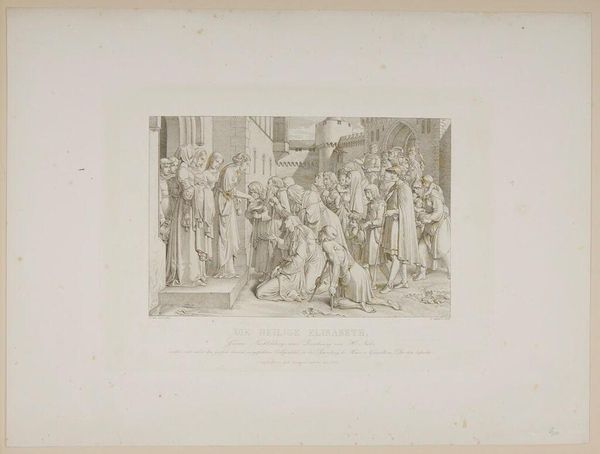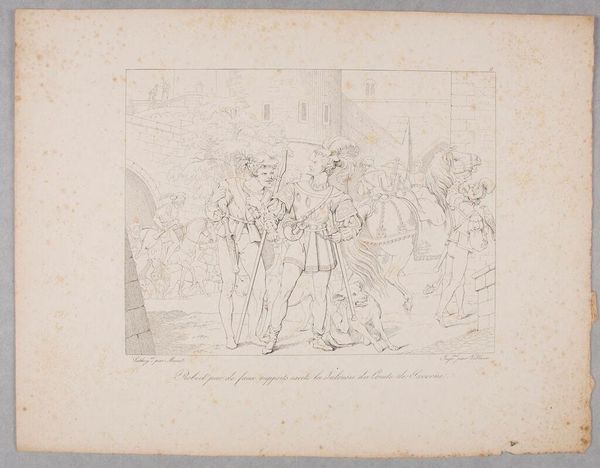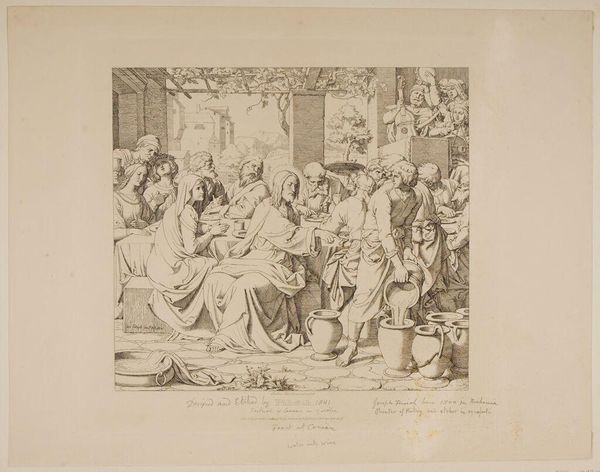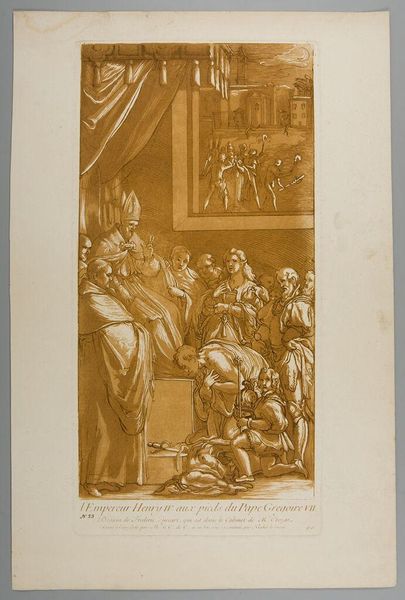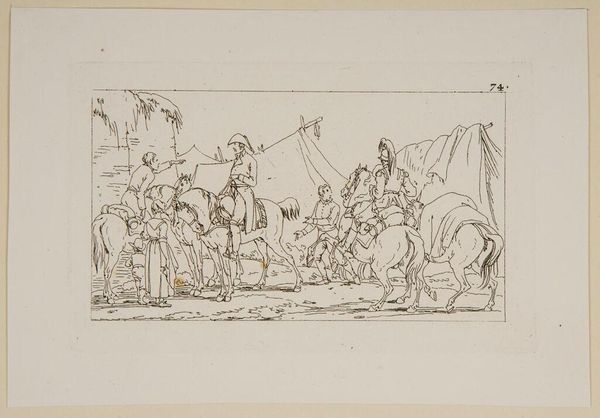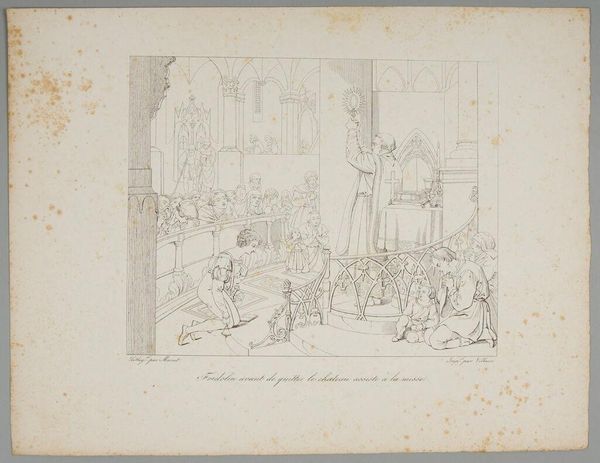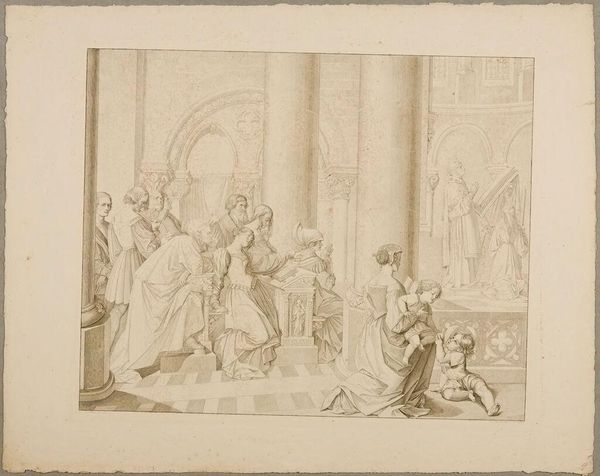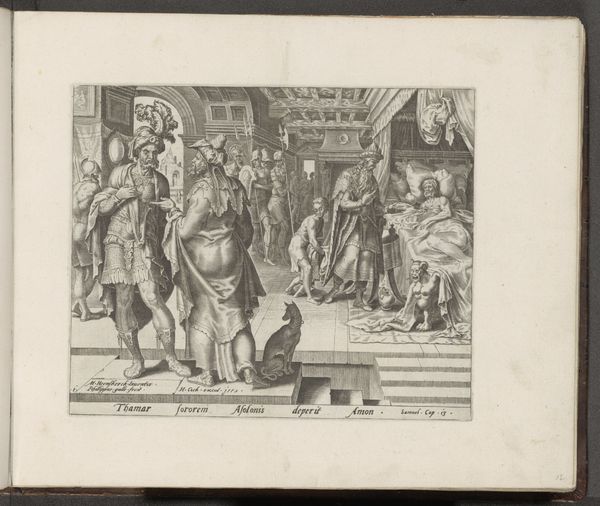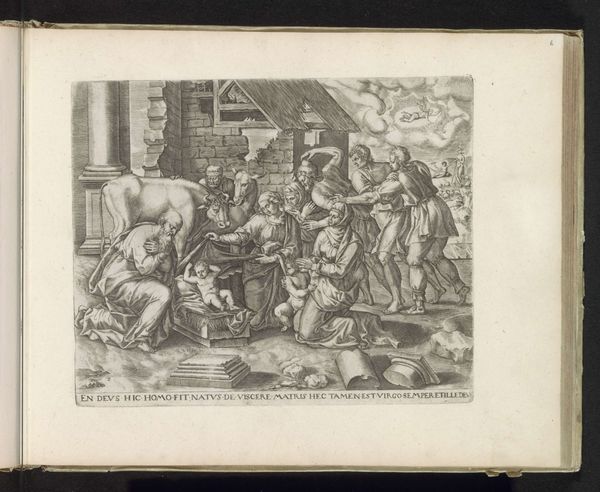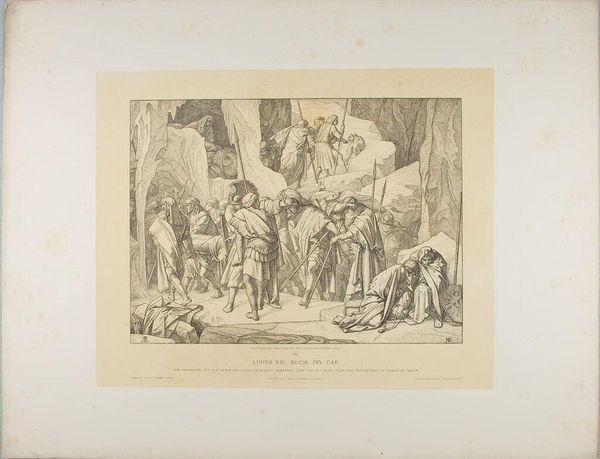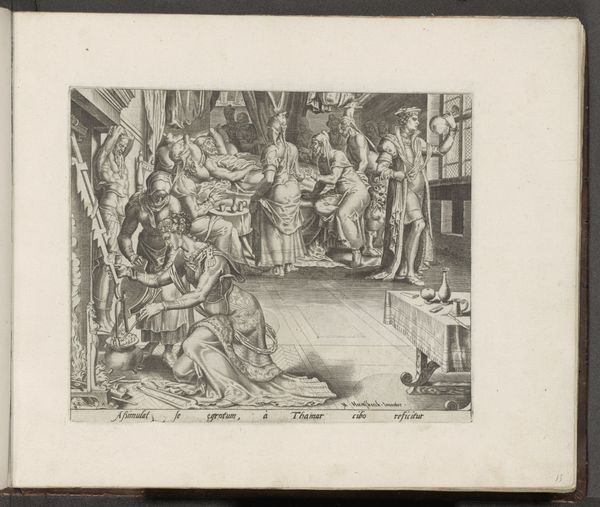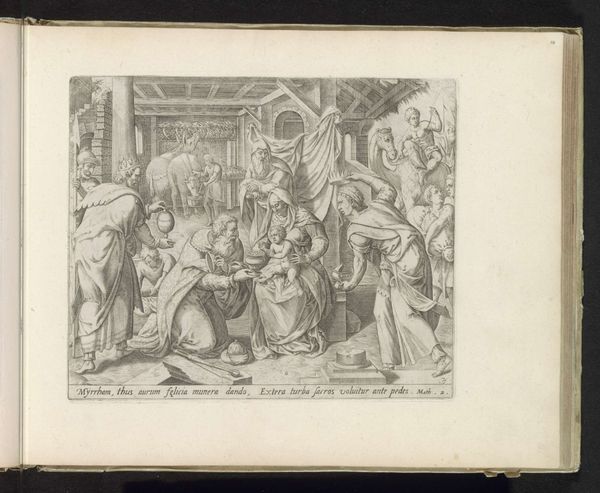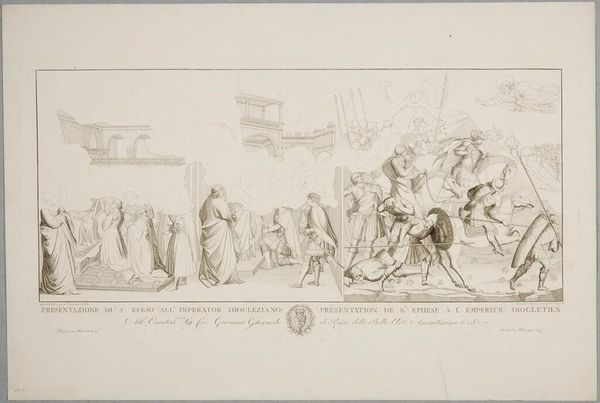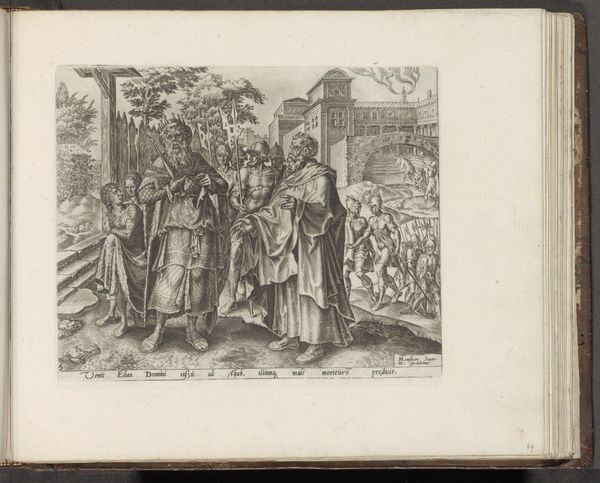
Copyright: CC0 1.0
Editor: This is Santi Pacini's "Adoration of the Magi," a drawing from the 18th century, held at the Harvard Art Museums. It's striking how many figures he fits into one space. What do you see in this piece, beyond the obvious biblical scene? Curator: I see a negotiation of power, subtly critiqued. Note the Magi, kneeling, offering gifts, and the crowd behind, a sea of faces. But look at their expressions - are they truly reverent, or are they observing a political transaction? Editor: I hadn't considered that. So, it's not just a religious scene, but a commentary on the relationship between the powerful and the powerless? Curator: Precisely. Pacini, working in 18th-century Italy, would have been keenly aware of hierarchies. Even the act of adoration can be seen as a form of submission, a surrender of agency. It makes you wonder about the artist's own position. Editor: That completely reframes the drawing for me. I thought it was just a historical scene. Curator: Art always reflects the society that produces it, even when depicting biblical events. Examining those relationships can unlock new meanings.
Comments
No comments
Be the first to comment and join the conversation on the ultimate creative platform.
